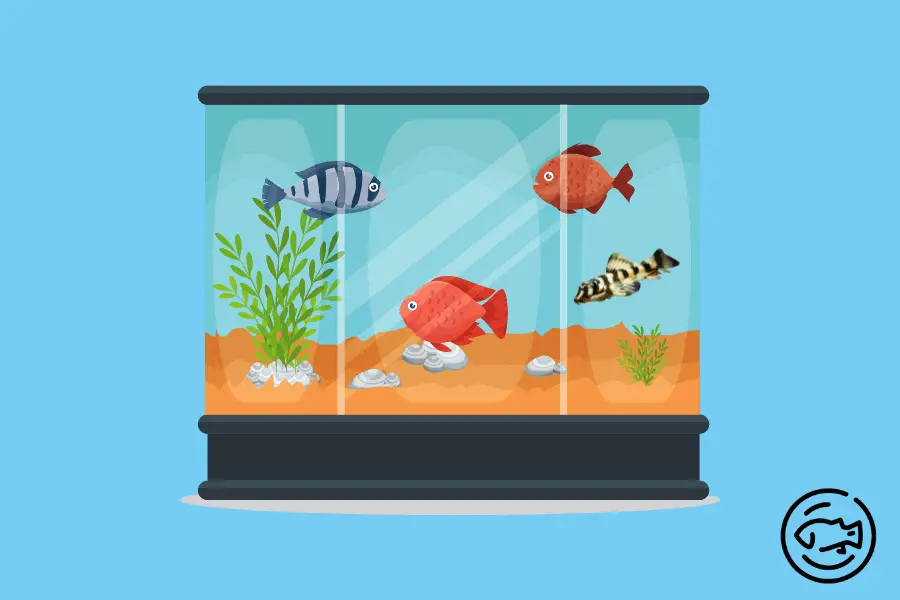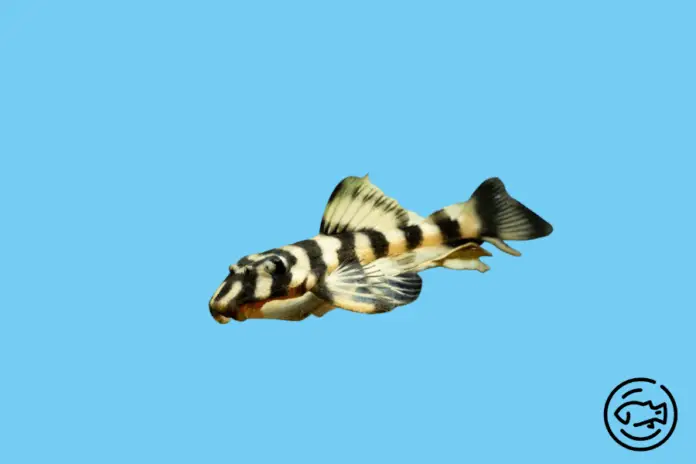Look no further than the butterfly pleco if you’re seeking for a fun fish to add to your fish tank.
An armored catfish from the Loricariidae family living in freshwater is called a Plecostomus, or pleco. Currently known pleco species number over 150.
Each pleco has an elongated body with four rows of bone plates, a big, curved fin, and various colors and patterns.
By consuming undesired food and algae that settle at the bottom of the tank, they contribute to keeping it clean.
You can get perplexed about the origin of the pleco and other facts. Everything you need to know about butterfly pleco will be covered in this post.
So, what are we waiting for? Let’s begin!
Origin
In the freshwater streams and rivers in South America and West Africa, Plecostomus catfish can be found.
In both the wild and captivity, plecos can withstand various water conditions.
The ability to store oxygen in their tummies and breathe through their skin helps plecos, aquatic animals that dwell in fresh and brackish water to survive in dry seasons.
The pleco can live without water for up to 30 to 32 hours when its environment is dry, and it may wiggle across dry terrain in quest of a new pool.
Since being introduced to US waters, plecos have become some of the Loricariidae family’s most widely distributed species. Plecos are a common species in the wild.
Appearance

Compared to other plecos kept in aquariums, the Butterfly Pleco is one of the most eye-catching species.
The species features a flattened body and a big sucker mouth, characteristics of the pleco family. Their body is somewhat compressed toward the tail and tapering around the eyes.
The term “butterfly pleco” refers to the fish’s body pattern, composed of a light/dark brown base color with prominent black stripes or butterfly markings.
In the wild, the fish can better integrate into its surroundings and fend off predators thanks to these marks, which also offer superb camouflage.
In aquariums with a dark substrate and background, their base color and stripes will appear much darker, and in tanks with a lighter substrate, their colors will appear brighter.
By observing their odontodes, it is simplest to tell male Butterfly plecos from females.
Mature male butterfly plecos typically have more pronounced odontodes on their pectoral fins and cheeks than females.
Their longer pectoral spines, which are employed for both mating and defense, are more extensive.
When seen from above, males also appear thinner while females appear wider in shape.
Size and Lifespan
Plecos can reach lengths of up to 24 to 25 inches maximum as adults. The growth of butterfly plecos is moderately quick.
Some Plecostomus catfish can reach lengths up to 30 inches, such as the pseudacanthicus major (not a common fish for home aquariums).
Plecos don’t get as big in aquariums as in the wild.
Most aquarium fish reach a length of 15 inches before they stop developing. However, they take between two and three years to fully mature.
Furthermore, a Plecostomus can live for 10 to 15 years in captivity. Since plecos are not susceptible to specific environmental aquarium diseases, they can live much longer than 15 years.
Behavior
Plecos are calm fish that may live together in an aquarium.
The fish, however, display aggressive and territorial tendencies by chasing and shoving one another under stress, competing for food and breeding opportunities, and in unfavorable tank conditions.
Plecos have also been observed sucking the slime coats off other fish, including goldfish and discus fish, inflicting injuries.
Care
The care requirements for the plecostomus are straightforward and not very complicated as many would think.
The plecostomus catfish can be found in fresh and saltwater in the wild; however, they favor swift-moving streams with pebbly riverbeds.
To help your plecostomus feel at home, provide a comparable tank environment.
Also read: 8 Best 55 Gallon Fish Tank Filter Reviews
Natural Habitat
The Rio Negro River is home to many beautiful Butterfly Plecos in South America’s Brazil.
They live in streams and tributaries with a relatively fast flow, where the water is typically stained a tea color from tannins released by decomposing organic debris.
These species also enjoy strong water currents and consistently high oxygen levels in the tank.
They occasionally can be seen foraging for food on the bottom of the water, moving quickly.
Keep ornaments, plants, and other items in the tank so the fish can hide and play.
Size of the tank
Butterfly Plecos don’t grow to be very big and don’t need as big of an aquarium as regular plecos; therefore, a 40 to 45-gallon tank will hold just one fish.
A minimum of 75 gallons are required to keep a pair of butterfly plecos in a pleasant environment.
Butterfly plecos may be aggressive toward one another, like other bottom-dwelling animals.
You can decorate a larger tank with a larger footprint to give each fish stronger territorial and boundary markings.
How to clean the tank?
To properly clean your fish tank, be sure you are following the correct procedures. In the tank, it is crucial to install a powerful filtration system.
Considering how much garbage Butterfly Plecos make, you should go through the substrate using an aquarium vacuum cleaner.
Tankmates
This fish can be kept in groups of more than one. Males may occasionally engage in fighting, although this is unimportant.
They will yell at each other before turning their attention to something else.
If you decide to add additional fish to the tank with rubber plecos, search for fish that share the same characteristics and temperament as the butterfly pleco.
Small tranquil fish can be kept in the same tank without causing any problems if you can find them. These fish don’t bother bothering their tankmates and generally keep to themselves.
Food and Diet
In the wild, plecos are opportunistic scavengers who will consume anything they come to find, including algae, wood, plant detritus, and small insects.
The pleco’s diet in the tank should resemble its natural habitat. For instance, whereas some plecostomus catfish prefer eating driftwood, others primarily consume vegetation.
You can feed your plecostomus catfish a mixture of algae, plant matter, and plant-based meals, including lettuce, spinach, zucchini, cucumbers, and shelled peas.
Worms are an excellent choice for bottom-feeding plecos since they are nutrient-rich live food that sinks to the bottom of the tank.
Being nocturnal, plecos should be fed at night, before the tank lights are turned off. Give the tank two food pinches.
Water condition
The water of blackwater streams, where butterfly plecos are found, is usually soft, acidic, and stained a dark tea color by tannins released by decaying leaves and wood.
Although you don’t have to duplicate these optimal water characteristics precisely, you should try to achieve the following:
Water temperature: 25-30°C (77-86F).
pH range: 5.6-7.0
Ammonia: 0 ppm
Nitrite: 30 ppm of nitrate
Hardness: 2 to 18 dGH
Despite the relative latitude of these water parameters, you should nevertheless conduct routine water testing to ensure that everything is in working order.
To monitor the ammonia, nitrite, and nitrate levels in your butterfly pleco tank, purchase a high-quality water test kit and use it once every two weeks.
Act immediately to address the issue if you observe an unexpected increase or drop in values.
Due to the sensitivity of butterfly plecos to ammonia and nitrites, these levels should always be zero.
High amounts of oxygen are required, and your aquarium should have a reasonably strong and reliable current.
Breeding
Although it is difficult, it is possible to breed butterfly pleco.
They are uncommon in the aquarium trade and difficult to breed in captivity because they require a particular environment to feel at ease enough to lay eggs.
Because butterfly plecos are cave spawners, they will lay their eggs in a cave or another protected location.
You should give them a lot of hiding spots in the tank, such as pleco caves if you want to promote reproduction.
Encouraging juveniles to start mating and reproducing is ideal for keeping a group of them together in housing.
Once a pair has developed, you should transfer them to a different breeding tank with the same conditions and water features as the main tank.
In the cave, the butterfly pleco’s female will lay her eggs, which the male will fertilize.
The male will be the only one in charge of watching over and fanning the fertilized eggs until they hatch, which typically takes 8 to 10 days.
Conclusion
You should be able to decide whether this fish is the best choice for your aquarium now that you know how to care for butterfly pleco.
Your fish tanks will look fantastic with these lovely and intriguing fish. If you give them the correct setting, they are calm and straightforward to take care of.


